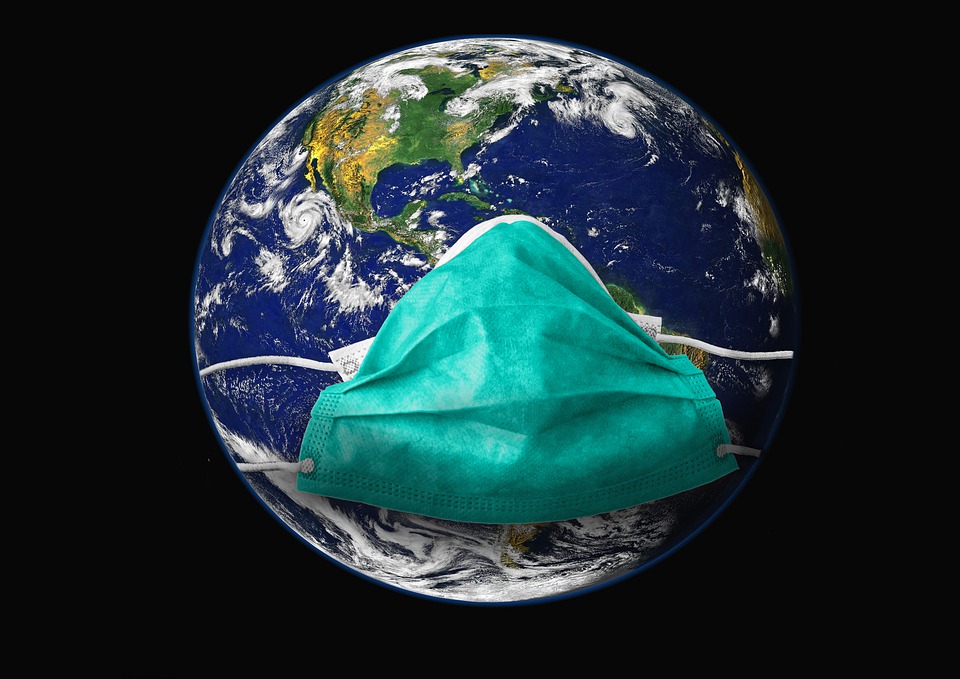As we embark upon a semester of teaching face-to-face with masks and physical distancing, we wanted to share tips for making this work. I, Maha, have a mix of feelings from excitement to be with students again, anxiety over whether we can stick to all the safety measures, and concern that we won’t be able to communicate well in a dialogue-based class. As for me, Gwyneth, this feels a bit like deja vu. I want to ensure safety for everyone in the classroom, but also make students feel heard and seen even with masks.
Gwyneth Talley taught in this mode last year at the University of Nebraska–Lincoln, and Maha Bali crowdsourced experiences of other educators from Twitter this summer (curated here), and just started trying new things this semester.
You can watch a video of Gwyneth and Maha discussing Gwyneth’s experience teaching with masks, embedded here:
… or you can read a summary of some of our tips:
- Wear the right mask for you
Both of us find the KN95 masks more comfortable for teaching – they are further away from the mouth, capture the least amount of sweat, and they don’t require constant readjustment on the bridge of your nose. Find the brand or style (cloth or surgical masks) that makes you comfortable and wear it. Some masks become humid from talking while teaching, so you might want to have a few spare ones with you to switch during the day. Most people say they eventually get used to teaching with masks even if they initially felt uncomfortable or anxious. Give it time and try different options.
- Model good mask-wearing and bring extra masks for students
Wear your own mask properly from the beginning to end of class, but if you need a break to breathe or drink water, you can model how this can be done for students (e.g. slip off your mask for a minute to drink water but don’t speak while you have the mask off – or step just outside class to take a sip), or give short breaks (Maha gives 5 minutes) or let students know when it is ok to take breaks if they need them so you don’t have different students walking in and out all the time.
Even though it may feel uncomfortable to be the “mask police”, we as faculty are responsible for our students’ safety. If you have extra masks on hand, when a student walks in unmasked you can silently offer them a new (preferably individually wrapped) mask. Or remind them that there are free masks distributed by the Student Union at the gates. Maha has found that if an unmasked student walks in and finds everyone in the room wearing their masks, they automatically take theirs out and put it on.
- Expect that you will need to project your voice and speak slower, enunciate/articulate more clearly
For some, projecting (speaking more powerfully and loudly) comes naturally and is not a problem. For others, this may get exhausting. Speaking slower and enunciating more clearly may help students understand you better. They cannot see your mouth anyway, so you don’t need to feel embarrassed by what it looks like when you are over-articulating. If you don’t start feeling more comfortable doing this, you may have access to or can purchase your own low-cost microphone or amplifier. Let us know in the comments if you’ve tried something like this.
Projecting takes effort and a lot of saliva. So make sure you keep hydrated. Gwyneth likes to pose an open ended question, then quick break for water. Open the water bottle, slip an ear strap off, drink, wink or connect with the students as they briefly see your face, drink again, put the mask back on correctly, and close the bottle. By the time you have taken this pause, students will have thought about your question and should be ready to answer.
Give students ideas of how they can indicate they don’t understand or need you to slow down. Since you cannot see students’ full faces, decide on ways of showing how they’re feeling or what they’re thinking, like using thumbs-up/down gestures, or giving them red, green, blue cards to indicate different messages.
- Prepare ways to hear “all student voices”
We all know some students just have low voices and cannot project as well as faculty do, especially given the distancing. One way to ensure you “hear” from all students is to ask some questions (open-ended, word cloud, multiple choice) on a polling tool such as Nearpod, Slido, Mentimeter, etc. You can also ask students to type open-ended answers to questions on any semi-synchronous/chatting platform you use for your class, such as a WhatsApp group or Slack team. This way, all students can participate. For group work, you can also create (or ask students to create) shared editing spaces like Google docs or Google slides so students can each work on their own device without needing to come too close to look over each others’ shoulders.
- Learning Students’ Names
It’s tricky learning students’ names when they’re wearing masks. You could give students A4 paper and ask them to fold it like a tent on their desk, or a sticky-nametag and ask them to write their names in large font and keep them in front of them, bring them to the next class (or make new ones), sit in the same place, etc. Maha also tried writing all the names from banner, with different colors for different students, and handing them their nametag as the walked in. That way, you make eye contact with each student as you hand them the nametag, and this might help you connect with them individually. Remember to sanitize your hands before and after this, though.
Try to give yourself cues about students that can help you recognize them next time, like hairstyle, for example. You can also invite students to use their full-face photos on some kind of “introduction” assignment, such as creating Flipgrid video introductions.
Nametags help faculty AND the students to learn each others’ names creating a learning community, when the mask wearing might make it feel harder to connect with other students. If students can see the names of their peers when working in pairs or small groups, they are more likely to connect and build a community through discussion.
- Pace Yourself and Repeat
Slowing down is just a good pedagogical practice. Prepare for everything taking more time than usual. Giving yourself pauses to take a drink, or just to breathe between topics gives the information time to settle in the minds of the students.
Be aware of the direction of your voice. If you normally write on the board, while speaking without a mask, sometimes it is hard for students to hear you. With a mask, it is WAY more important to finish writing on the board, then turn around, and lead your students through the material you wrote.
Depending on the speed of the people talking, the accents, on top of the masks, it is hard to hear and understand everyone at all times in the classroom. Make sure if students ask questions, or comment that you repeat and/or summarize it for the whole class to hear. This can also be assisted with Tip #8.
- Sometimes walk closer to listen
For students who cannot speak louder, you may need to sometimes get closer and give them your ear, with both people wearing masks it’s okay to move in a little. Also gesture to them by holding a hand to your ear to indicate that you did not hear or need them to speak louder. Sometimes, the gesture will help them speak louder without you needing to move closer.
- Sometimes rearrange the class seating
Maha found that moving the chairs around and having a class of 20 sit in a circle manages to maintain the same distance of around 1-1.5meters (around two floor tiles between chairs) and actually allows more distancing. This way, students only have one student on each side, and no one in front of or behind them. Furthermore, this arrangement allows everyone to be facing each other and makes it easier for the professor to walk a little bit closer to listen to someone whose voice is too low, without getting close to others. It also makes movement easier if you want to do some small group work or pair work. If you aren’t allowed or able to move chairs, maybe ask students to just turn and face each other for pair work, or to stand up but stay near their seat.
- Give breaks or do outdoor activities if needed
Maha surveyed students on their comfort working outdoors, and most were willing to do that if the weather outside is good. This may be useful for pair or group activities to ensure safe distancing and reduce noise inside the class.
Maha also noticed that students seemed more tired than usual after 40 or so minutes of class, so she asked if they would like to take a 5 minute break to get outside, take off their masks and take a deep breath before coming back, and students were relieved to get this opportunity. She tried it and it really made a difference for the energy of the class for the last half hour.
- Prevent your glasses from fogging up
Many faculty worry about glasses fogging up, blurring, and not being able to see and adding this extra task of cleaning off your glasses every 2-5 minutes. There are some simple DIY fixes to prevent glass fog. Simply following this technique here or some of these options might help prevent this irritating side effect of mask wearing.
What about you? Share your experience!
Now that you’ve been teaching in-person with masks for a few days, share your experience with us in the comments!



